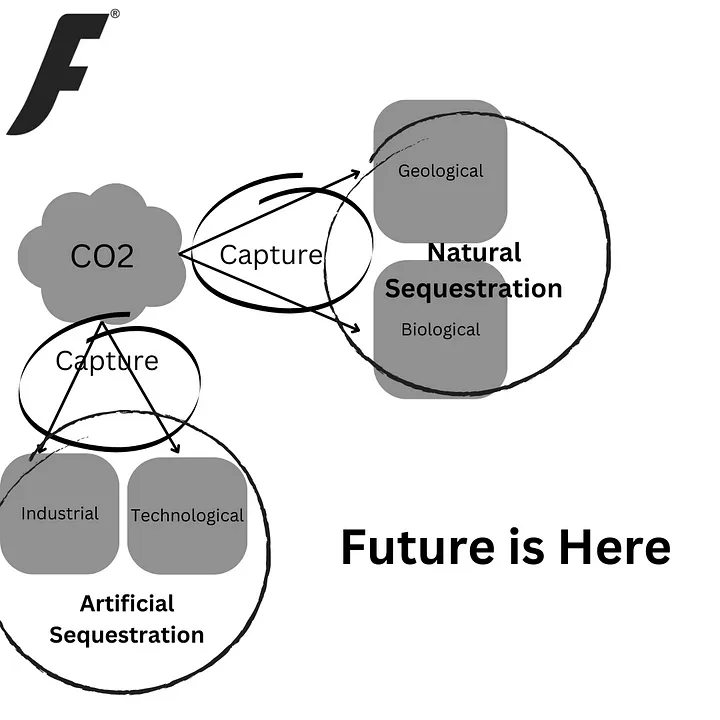Carbon Sequestration — A Future-Focused Tool

Breathe Easier for the Planet: Dive Into the World of Carbon Sequestration
Our planet is experiencing an alarming rise in temperatures, primarily due to greenhouse gases in the atmosphere. Human activities, notably the burning of fossil fuels for food, transportation, and electricity, have significantly contributed to this increase. Now, we humans are stepping up to reverse this trend through Carbon Sequestration.
Understanding Carbon Sequestration
Carbon Sequestration is a process designed to capture atmospheric carbon dioxide (CO2) and store it. CO2, a key greenhouse gas, contributes to ozone layer depletion and a rise in global temperatures. Since carbon is a natural part of our ecosystem, forming the Carbon Cycle, an imbalance leads to these environmental issues. Scientific evidence shows a direct correlation between CO2 levels and temperature rise. Carbon Sequestration techniques are vital in maintaining biodiversity and addressing climatic changes. This method involves extracting CO2 from the atmosphere and storing it in solid or liquid forms. There are four primary methods:
- Biological Sequestration: This natural process involves absorbing CO2 through chlorophyll in plants, both on land and in oceans. The absorbed carbon is then used to create new plant tissues. The effectiveness of this method is closely linked to soil quality.
- Geological Sequestration: Another natural method, this involves storing CO2 under rock formations. This process often complements activities like cement production, which can facilitate CO2 storage.
- Technological Sequestration: Leveraging advancements in technology, this method captures CO2 and repurposes it as a resource.
- Industrial Sequestration: Focused on combustion processes, this method captures CO2 during various stages of combustion, including Pre-Combustion, Post-Combustion, and Oxy-Combustion.

The Impact of Carbon Sequestration
Carbon Sequestration offers a promising solution to reduce the presence of greenhouse gases, protect the ozone layer, and mitigate rapid temperature increases. By capturing CO2, we move towards sustainability. Many developed countries have begun implementing Carbon Sequestration practices, and industries are increasingly adopting these methods. However, human activities like deforestation disrupt this balance. Trees and green vegetation play a crucial role in converting atmospheric CO2 into oxygen, emphasizing the need for governmental regulations like the Paris Agreement, which sets guidelines to curb CO2 emissions.
Our Collective Responsibility
Awareness of Carbon Sequestration is growing, but it remains a niche area. It's imperative to increase public understanding and encourage collective action. At Flocard, we are committed to this sustainability goal. Our efforts extend beyond reducing paper consumption. With every Flocard created, our Planters app plants a tree, contributing to Biological Sequestration. More Flocard mean more trees planted, enhancing our planet's green cover. Together, we can make a difference. Join us in this journey to protect our environment and create a sustainable future.
Join Flocard to create a greener, healthier planet.
Every action counts —from using digital solutions like FloCard to reduce paper waste to supporting tree planting initiatives. Together, we can drive positive change. Start making a difference today by choosing sustainable options and sharing the message of environmental responsibility.
